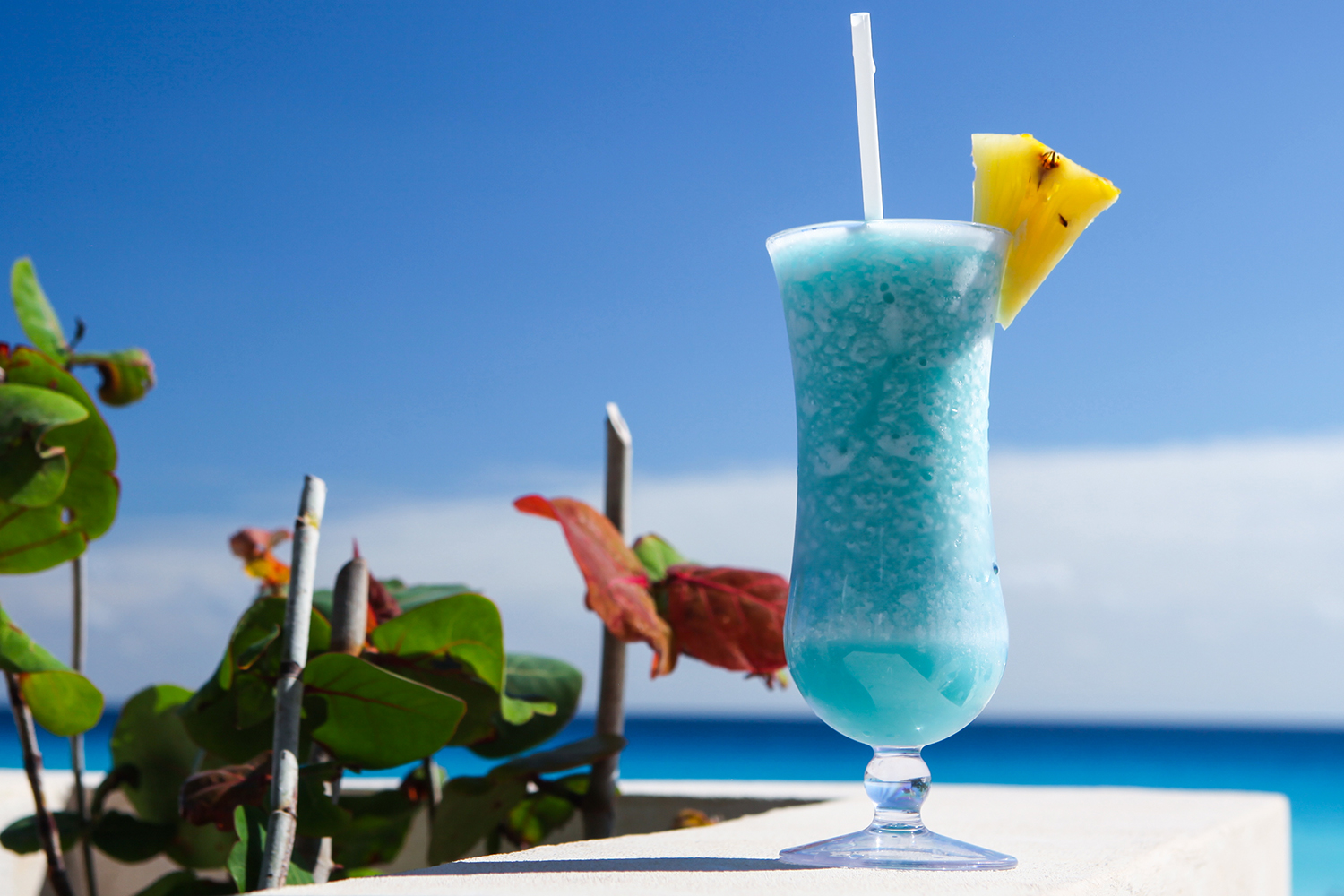
Not too long ago, Blue Curaçao was out of style. Like banana liqueur and Merlot, it was the laughingstock of a large portion of the drinks industry. Well, trends change, and tropical blue drinks are back with a vengeance.
Yes, the latest cocktail trends are hard to keep up with, but that’s what we’re here for. Blink once, and Cosmopolitans are popular again. Blink twice, and the Espresso Martini is in the rubbish bin.
Maybe it’s a yearning for all things tropical; maybe it’s nostalgia; maybe it’s the FOMO that comes with being in a post-pandemic society — whatever the case, blue drinks are coming back into the cocktail picture. And making them so often involves a key ingredient made from Caribbean citrus.
What is Blue Curaçao?

Blue Curaçao is made on the Caribbean island of Curaçao, from a native citrus called laraha. The dried peels of this bitter descendent of the orange are soaked in alcohol, spices are added, and the liquid is distilled. Water is then reintroduced and the liqueur is set. Oh, and about that blue — it’s added. But the hue has become iconic and associated with a host of tiki drinks.
Cointreau and Grand Marnier are other citrus liqueur options but taste a bit different and, most importantly, don’t offer that oceanic zap of blue. Food coloring might be a little cheesy, but there’s no denying the effect the liqueur has on a drink. With one of these sea-blue cocktails in your hand, it’s hard not to feel like you’re on vacation, wherever you are.
How to use Blue Curaçao

We asked a few top bartenders how best to use Blue Curaçao. “The first tip is to know where the line is,” says Ryan Liloia, head bartender at Clover Club in Brooklyn. Blue Curaçao can be pretty sweet. You want to make sure the drink can be balanced around the additional sweetness added by Blue Curaçao before using it just for the sake of making a drink blue.”
“This leads directly into the second tip,” he continues. “It’s important to recognize the color that you’re trying to achieve. Varying amounts of blue Curaçao combined with different ingredients will lead to wildly different shades of blue while simultaneously throwing off the balance of your cocktail.”
As with most liqueurs and spirits, there is a bit of a hierarchy. Sure, the cheap still will impart some color but if you really want to enjoy the flavor and what it can bring to the table, you may want to mess around with some higher end options (blue or otherwise).
“Finally, know your brands,” Liloia continues. “You get what you pay for. Curaçao has always had a home with tropical drinks. Curaçao lends a bitter and sweet orange flavor that will pair well with many tropical ingredients. Additionally, using it to dye a drink blue will further enforce the escapism that these tropical
Thomas Hawks is the head bartender at Rose Lane at Park Lane New York. He says the blue potion excels in citrus-based cocktails, “where its rich orange essence harmoniously complements and accentuates the natural astringency of fresh citrus juices.” He adds that cocktail with lemon or lime deepens the citrus undertones and offers another flavor layer.
“Curaçao serves as an ideal counterpoint in cocktails that feature herbal or bitter components, such as those containing vermouth or amaro,” Hawks says, adding that there’s an added aesthetic that doesn’t compromise taste. “This liqueur is a pivotal tool for crafting cocktails that are as visually engaging as they are delightful to sip.” He calls Blue Curaçao a cornerstone amid the tropical drinks realm.
Mike Milligan of the Four Seasons in Oahu has his go-to option. “Only Pierre Ferrand Dry Curaçao for the original Mai Tai,” he suggests. He says they use the blue stuff for drinks like the Adios, Mother F-er, Blue Hawaiians, and L.A. Water. “I am interested in colorful preparations for sure, and it comes in the clutch for such items,” he added.
If you like it chilled, keep it in the fridge, but the liqueur stores just fine at room temperature. It will last for ages but might start to fade a bit in terms of flavor after a year or two opened.
Keep up on the topic with our features on classic tiki cocktail recipes and the drinks of Aruba, Bonaire, and Curaçao. We’ve also got a Curaçao travel guide, should you be lucky enough to get to the sun-soaked island off the coast of Venezuela. And if you can only think about the Caribbean, do so with a blue drink in hand.


